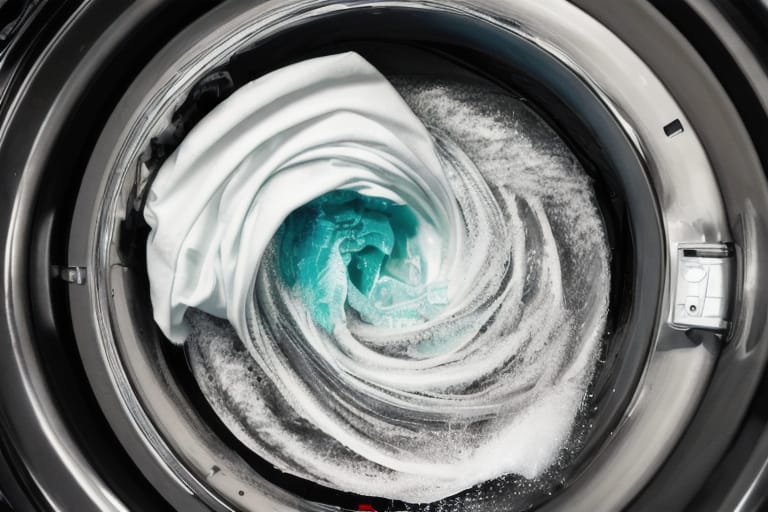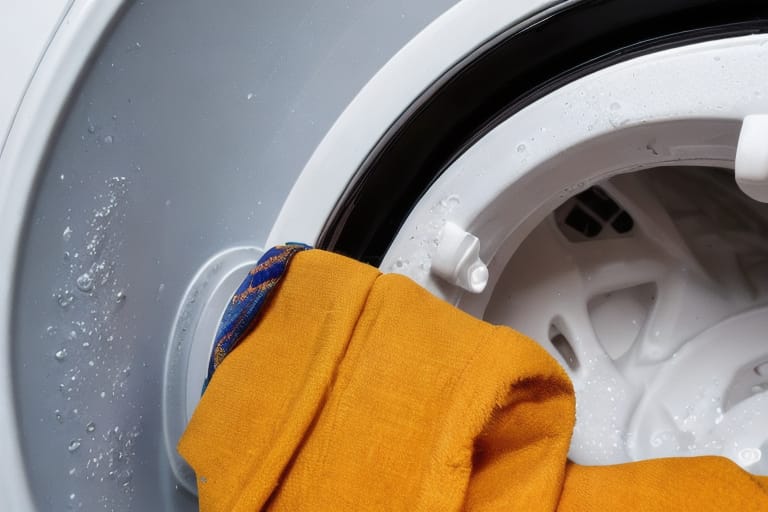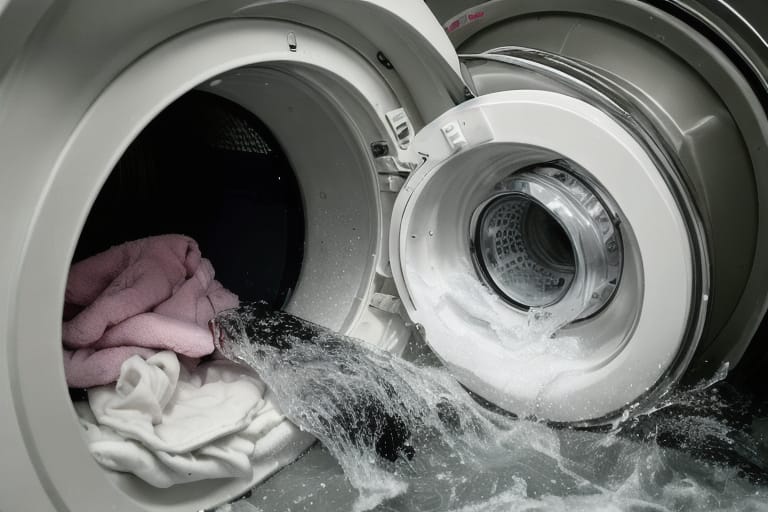Are you wondering if washing your down comforter will ruin it? You’re not alone! Many people are unsure about how to properly clean and care for their cozy bedding. In this beginner’s guide, we’ll explore everything you need to know about washing down comforters without damaging them. From understanding the unique properties of down to following the right washing instructions, we’ve got you covered. Let’s dive in and learn how to keep your comforter fluffy, warm, and clean!
Understanding Down Comforters
Before we get into the nitty-gritty of washing, let’s first understand what makes down comforters special.
What is a down comforter?
A down comforter is a type of bedding filled with the soft, insulating undercoat of ducks or geese. This natural filling is known for its exceptional warmth-to-weight ratio, making down comforters lightweight yet incredibly cozy.
Benefits of down vs. alternative fillings
Down offers several advantages over alternative fillings like polyester or cotton:
- Superior insulation
- Lightweight and breathable
- Long-lasting with proper care
- Moldable and conforming to your body
However, down comforters do require special care to maintain their loft and warmth. Improper washing can lead to clumping, feather leakage, and loss of insulation.
Signs it’s time for a cleaning
Even with regular fluffing and airing out, down comforters need to be washed occasionally. Watch for these signs that indicate it’s time for a deeper clean:
- Visible stains or discoloration
- Noticeable odors
- Flattened or clumped filling
- Allergy symptoms acting up
Preparing to Wash a Down Comforter
Before tossing your comforter in the washing machine, take these preparatory steps:
Check care instructions and labels
Always refer to the manufacturer’s care label for specific washing instructions. Some comforters may have special requirements or even be “dry clean only.”
Gather supplies
To properly wash a down comforter, you’ll need:
- A mild, low-sudsing detergent (Woolite, Eucalan, or Down Wash)
- Wool dryer balls or clean tennis balls
- A large capacity front-loading washer and dryer
Access to large capacity machines
Washing a bulky comforter requires a machine with ample space. If your home machines are too small, consider using a laundromat or commercial-sized machines.
Removing duvet cover if necessary
If your comforter has a removable duvet cover, take it off and wash separately according to its care label. This protects the down filling from unnecessary agitation.
Machine Washing Down Comforters
With your comforter prepped, follow these steps for a successful wash:
Using a gentle or delicate cycle
Choose the gentlest cycle on your washing machine, often labeled “Delicate” or “Handwash.” This slower spin and reduced agitation prevent damage to the delicate down clusters.
Adjusting water temperature
Use cool or warm water, never exceeding 30°C or 85°F. Hot water can damage the down’s natural oils and cause shrinkage.
Adding detergent
Select a mild detergent specifically designed for down, or a low-sudsing formula like Woolite. Avoid regular detergents which are too harsh. Use about half the recommended amount to prevent excess soap residue.
Avoiding agitation and spinning
If your washer allows, opt for a cycle with minimal agitation and the lowest spin speed. Too much movement can cause the down to clump or even leak through the shell fabric.
Adding tennis balls to fluff
Toss a couple of clean tennis balls or wool dryer balls into the wash. These help break up clumps and evenly distribute the down as it washes.
Drying a Washed Down Comforter
Proper drying is key to restoring your comforter’s loft and preventing mildew. Here’s how:
Low heat tumble drying
Set your dryer to low heat and give the comforter plenty of time to dry completely. High heat can scorch or melt the delicate down fibers.
Adding dryer balls to fluff
Just like in the washer, wool dryer balls or tennis balls help break up clumps and fluff the down as it dries. Toss a few in at the start of the drying cycle.
Stopping to break apart clumps
Every 30 minutes or so, pause the dryer and manually break apart any clumps. Shake the comforter vigorously before putting it back in to redistribute the down evenly.
Air drying option on a rack
If you prefer to air dry your comforter, lay it flat on a large drying rack or clean surface. Avoid hanging it, as this can strain the stitching and cause the down to sag. Regularly fluff and rotate the comforter to promote even drying and prevent mildew.
Dealing with Clumping and Leaking
Even with proper washing and drying techniques, you may still encounter some clumping or feather leakage. Here’s what to do:
Causes of down clumping
Down can clump due to excess moisture, soap residue, or high heat. To prevent this, use minimal detergent, rinse thoroughly, and dry on low heat with dryer balls.
Preventing feather leakage
If you notice feathers or down poking through the shell fabric, don’t pull them out as this can create a larger hole. Instead, gently push the feather back inside and dab a bit of fabric glue or iron-on patch over the area to seal it.
Redistributing and fluffing
After washing and drying, give your comforter a thorough shake to redistribute the down evenly. Regularly fluff it between washes to maintain loft and prevent clumping.
When to replace instead
If your comforter has extensive clumping, leaking, or thinning that can’t be fixed, it may be time to replace it. A high-quality down comforter can last 10-15 years with proper care, but all bedding wears out eventually.
Using a Laundromat or Professional Service
If you don’t have access to large capacity machines or feel unsure about washing your comforter yourself, consider these alternatives:
Benefits of large machines
Laundromats and professional cleaners have extra-large washers and dryers that can accommodate bulky comforters. This allows the down to move freely and dry evenly, preventing clumping and damage.
Costs of professional cleaning
Professional down comforter cleaning can cost $60-$100 or more, depending on size and service. While more expensive than DIY washing, it can be worth it for hard-to-clean items or for peace of mind.
Transporting a large comforter
Use a large, breathable bag or plastic bin to transport your comforter to the laundromat or cleaner. Avoid compressing it in a small space, as this can cause clumping and damage the delicate down.
Verifying proper cleaning methods
If using a professional service, verify that they have experience cleaning down comforters and will follow manufacturer care instructions. Ask about their process, products used, and any guarantees they offer.

Cleaning Alternatives to Machine Washing
If your comforter isn’t ready for a full wash or has special cleaning needs, try these alternatives:
Spot cleaning and stain removal
For small stains or spills, spot clean with a damp cloth and mild soap. Blot gently, avoid rubbing, and let air dry completely before using.
Freshening with baking soda
To freshen a musty comforter between washes, sprinkle baking soda on the surface, let sit for an hour, then vacuum thoroughly using an upholstery attachment. The baking soda will absorb odors and moisture.
Sanitizing with UV light
For a chemical-free refresh, hang your comforter outside on a sunny day. The UV rays from sunlight naturally disinfect and deodorize down bedding. Just avoid leaving it out too long, as prolonged sun exposure can fade colors.
Care Instructions for Down Comforter Shells
In addition to washing the down filling, it’s important to care for the outer shell fabric:
Gentle detergents and no softeners
Use the same mild, low-sudsing detergent on the shell as you would for the down. Avoid fabric softeners, as these can coat the fibers and reduce breathability.
Washing covers separately
If your comforter has a removable duvet cover, wash it separately according to its care label. This prevents tangles and allows for more thorough cleaning.
Avoiding bleaching or harsh chemicals
Harsh chemicals like bleach can damage the delicate shell fabric and cause yellowing. Stick to gentle, eco-friendly detergents and spot treat any stains.
Air drying covers
Whenever possible, hang duvet covers to air dry instead of using the dryer. This reduces wear and tear and helps maintain the fabric’s natural feel.
Storing Down Comforters Properly
Proper storage is key to extending the life of your down comforter and preventing damage:
Cleaning before storage
Always wash and thoroughly dry your comforter before putting it away for the season. This prevents musty odors and discourages moths or other pests.
Using breathable storage bags
Store your clean comforter in a large, breathable cotton or mesh bag. Avoid plastic bags or vacuum-sealed containers, as these can trap moisture and cause mildew.
Storing in a cool, dry place
Keep your stored comforter in a cool, dry closet or storage area away from direct sunlight or heat sources. Avoid damp basements or stuffy attics.
Fluffing while stored
Every few months, take your comforter out of storage and give it a good shake and fluff. This prevents the down from settling and helps maintain loft.
Extending the Life of a Down Comforter
With proper care and maintenance, a quality down comforter can last a decade or more. Here’s how to get the most life out of yours:
Frequent fluffing and shaking
Give your comforter a daily shake to fluff the down and maintain loft. This simple habit can make a big difference in preventing clumps and flat spots.
Using a duvet cover
Protect your comforter from body oils, spills, and wear by using a removable duvet cover. This adds an extra layer of protection and can be washed more frequently than the comforter itself.
Washing annually or as needed
Most down comforters only need to be washed once a year, unless they get spilled on or start to smell. Over-washing can damage the delicate down and shorten the comforter’s lifespan.
Knowing when to replace
Even with diligent care, all comforters wear out eventually. Signs it’s time to replace include:
- Thin or flat spots that don’t fluff up
- Excessive shedding or leaking down
- Lingering odors even after washing
- Yellowing or discoloration of shell fabric
Down Comforter Myths and Misconceptions
There are many myths and misconceptions about caring for down comforters. Let’s clear up a few common ones:
Debunking “dry clean only” care labels
While some comforter labels say “dry clean only,” this is often a precautionary measure rather than a necessity. Most down comforters can be safely washed at home if you follow the right steps.
You can’t ruin a down comforter by washing it
As long as you use the proper washing techniques, detergents, and drying methods, washing your down comforter will not ruin it. In fact, regular washing can help maintain loft and cleanliness.
Down comforters aren’t machine washable
While some very old or fragile comforters may require professional cleaning, most modern down comforters are made to withstand machine washing. Just be sure to use a large capacity washer on a delicate cycle.
Down alternatives are just as good as real down
While down alternative comforters can be a good choice for those with allergies or budget constraints, they don’t quite match the loft, warmth, and longevity of real down. With proper care, a quality down comforter will outperform synthetics over time.
Takeaways for Washing Down Comforters
To sum up, here are the most important things to remember when washing a down comforter:
- Always check the care label first and follow manufacturer instructions.
- Use a mild, low-sudsing detergent and cool water on a delicate cycle.
- Add dryer balls to the wash and dry on low heat, stopping to fluff periodically.
- Avoid high heat, harsh chemicals, and excess agitation or spinning.
- Fluff and shake your comforter regularly between washes to maintain loft.
- Store clean comforters in breathable bags in a cool, dry place.
- Replace comforters every 10-15 years or when they show signs of wear.
By following these guidelines, you can keep your down comforter clean, fluffy, and cozy for years to come without worrying about ruining it in the wash. Happy snuggling!

FREQUENCY ASKED QUESTIONS
- Can you wash a down comforter in a regular washing machine? Yes, you can wash a down comforter in a regular washing machine as long as it is large enough to allow the comforter to move freely. Use a front-loading machine on the gentlest cycle with minimal agitation and spinning. If your home machine is too small, consider using a commercial-sized washer at a laundromat.
- What happens if you wash a down comforter in hot water? Washing a down comforter in hot water can damage the delicate down clusters and cause shrinkage of the shell fabric. Hot water strips away the natural oils that keep down fluffy and resilient. Always use cool or warm water no hotter than 30°C or 85°F when washing down bedding.
- How often should you wash a down comforter? Most down comforters only need to be washed once a year, unless they get soiled or start to develop odors. Over-washing can be harsh on the delicate down filling and shorten the lifespan of the comforter. Between washes, regularly air out and fluff your comforter to keep it fresh.
- How do you get the smell out of a down comforter without washing it? To freshen a down comforter without washing it, try sprinkling baking soda on the surface, letting it sit for an hour, then vacuuming it thoroughly with an upholstery attachment. The baking soda will absorb odors and moisture. Alternatively, hang the comforter outside on a sunny day to let the UV rays naturally deodorize it.
- Can you ruin a down comforter by storing it in a plastic bag? Storing a down comforter in a plastic bag for a prolonged period can lead to moisture buildup and mildew growth, effectively ruining the comforter. Down needs to breathe, so always store comforters in large, breathable fabric bags made from cotton or mesh. Avoid vacuum-sealed bags or airtight containers.
- How long does a down comforter last? A high-quality down comforter can last 10-15 years or more with proper care and maintenance. Longevity depends on factors like the fill power of the down, the quality of the shell fabric, and how well the comforter is cared for. Using a duvet cover and washing gently can help extend the life of a down comforter.
- Is it better to dry clean or wash a down comforter? In most cases, it is better to wash a down comforter at home rather than have it dry cleaned. Dry cleaning chemicals can strip the natural oils from down and cause the filling to break down faster. As long as you use a mild detergent, a large capacity washer, and low heat drying, washing is a safe and effective way to clean a comforter.








